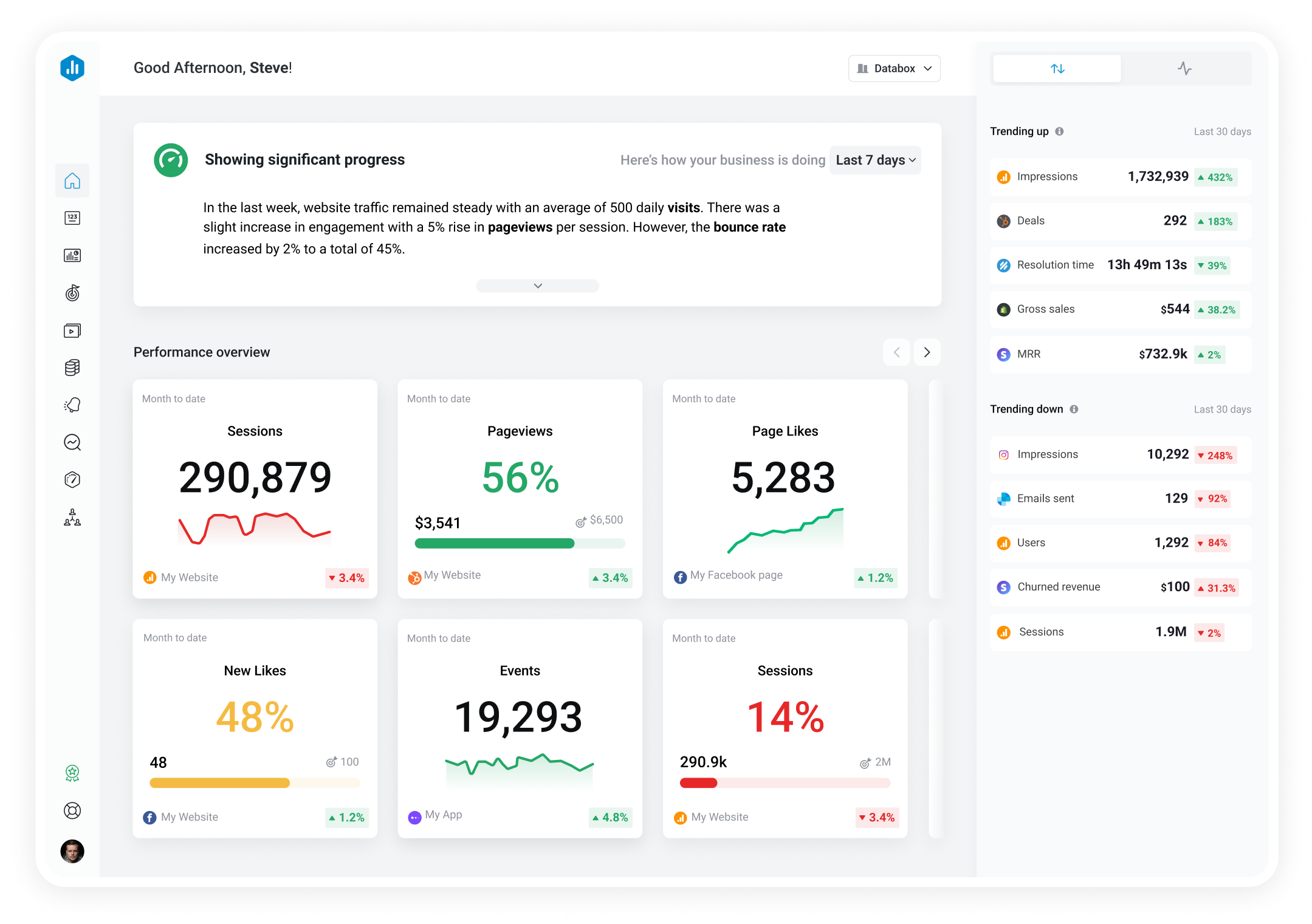Track all of your key business metrics from one screen
GET STARTED
 Google Ads
Conversion Rate
Google Ads
Conversion Rate Conversion Rate is the percentage of users who take a desired action on your website or landing page after clicking on your ad. It is used to measure the effectiveness of your Adwords campaigns.
With Databox you can track all your metrics from various data sources in one place.
The conversion rate measures the percentage of visitors who complete a desired action on your website or landing page.
This action could be anything from making a purchase, filling out a contact form, subscribing to a newsletter, downloading a whitepaper, or any other predefined goal that signifies a successful conversion.
To calculate your conversion rate, you first need to determine which actions will actually qualify as conversions. This can be a purchase, sign-up, or something else.
Once you have that information and set a specific time frame for your calculation, you can follow this formula:
Conversion Rate = (Number of Conversions / Total Number of Visitors) * 100
Say you have an online store, and in the last week, you had 5,000 visitors to your website. Out of those, 200 visitors made a purchase.
Let’s use the formula:
Conversion Rate = (200 / 5000) * 100 = 4%
In this example, the conversion rate is 4%. It means that 4% of the visitors completed the desired action, which, in this case, was making a purchase.
There’s no universally good conversion rate that can apply to any business. You need to consider factors such as industry, specific business model, and the actual conversion goal that’s being measured.
Other factors include the type of product or service offered, the target audience, and the quality of your marketing strategies.
For example, conversion rates for SaaS companies can vary widely, but a good benchmark might be around 3% to 8%.
Financial service websites, including insurance and banking, might see conversion rates from 2% to 7%.
Conversion rates for educational institutions and e-learning platforms may fall in the range of 3% to 10%.
These are some general figures across different industries, but we also prepared a few useful benchmarks across different platforms that you might find useful. We pulled them directly from our Benchmark Groups product:
Whether you’re an ecommerce store, a B2B service provider, or a content-based website, boosting your conversion rate is probably one of your key objectives.
But depending on which specific action you want to increase conversions on, you’ll need to test and refine a lot of different approaches.
That said, we compiled a few interesting strategies to help you improve your conversion rate, shared by some of the industry experts we talked to over the years:
More resources to help you improve:

Used to show a simple Metric or to draw attention to one key number.

Used to illustrate numerical proportions through the size of the slices.

Used to show comparisons between values.
Databox is a business analytics software that allows you to track and visualize your most important metrics from any data source in one centralized platform.
To track Conversion Rate using Databox, follow these steps:
 Goals
Goals Scorecards
Scorecards Metric Digest
Metric Digest Metric Builder
Metric Builder Data Calculations
Data Calculations Performance Screen
Performance ScreenThe AdWords PPC dashboard template gives a complete view of all the fundamental ad metrics, including cost-per-click, click-through rate and impressions.

Track key performance metrics like ad spend, CTR, conversions, and ROAS—all from Google Ads. Ideal for CMOs, PPC specialists, and Google Ads pros looking to optimize campaigns and boost ROI.

Use this Google Ads advanced report to share high-level and in-depth metrics of your Google Ads performance. Present key insights like CPC, Conversion Rate, Keyword Drilldown, and more.

A bad conversion rate is typically one that falls significantly below the industry average or it’s much lower than what similar-sized competitors in the same industry are seeing.
It’s important to note that what qualifies as a “bad” conversion rate can vary depending on the industry, business objectives, specific action, the offer itself, and other factors.
As a general rule of thumb, rates well below 1% rates may be considered poor.
Yes, conversion rate matters significantly for any online business.
It directly reflects the effectiveness of your marketing strategies and the overall performance of your website or landing pages.
